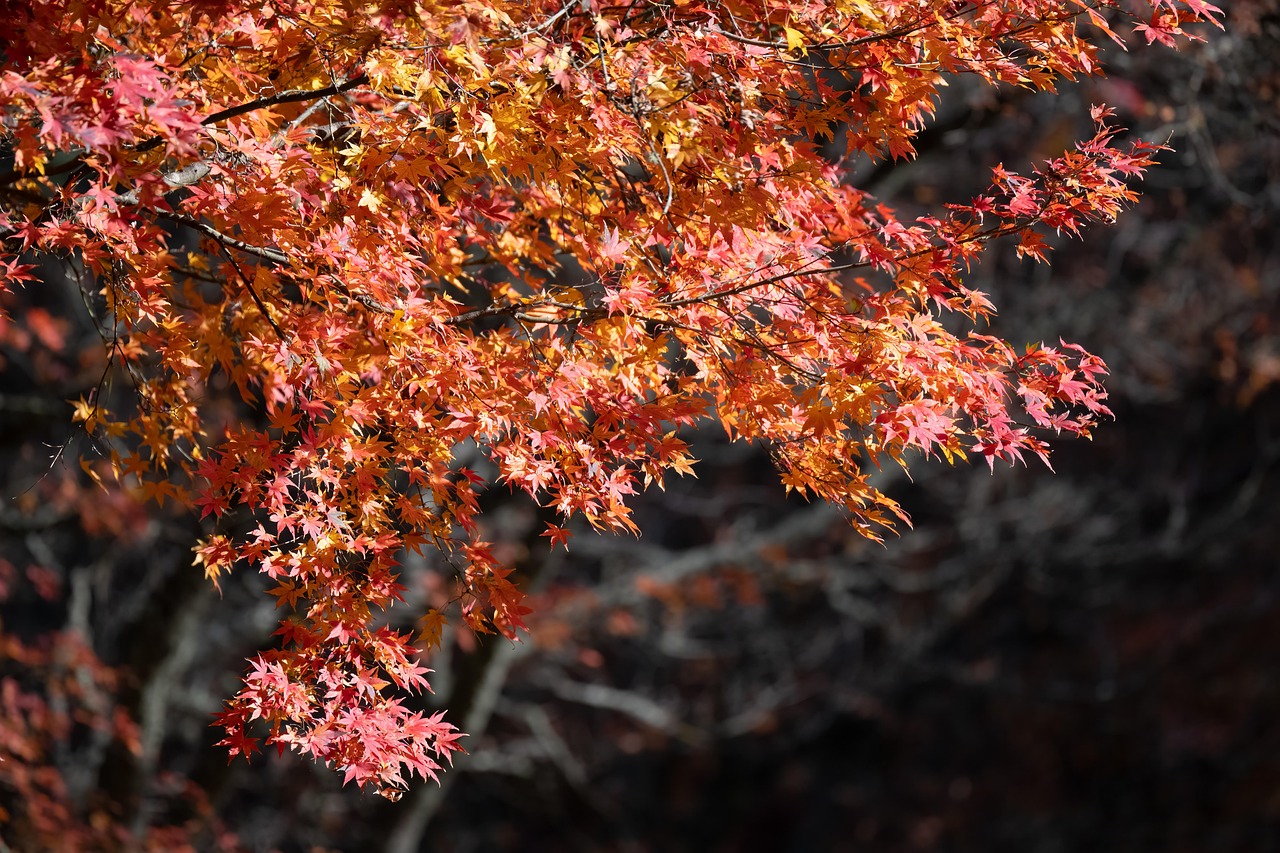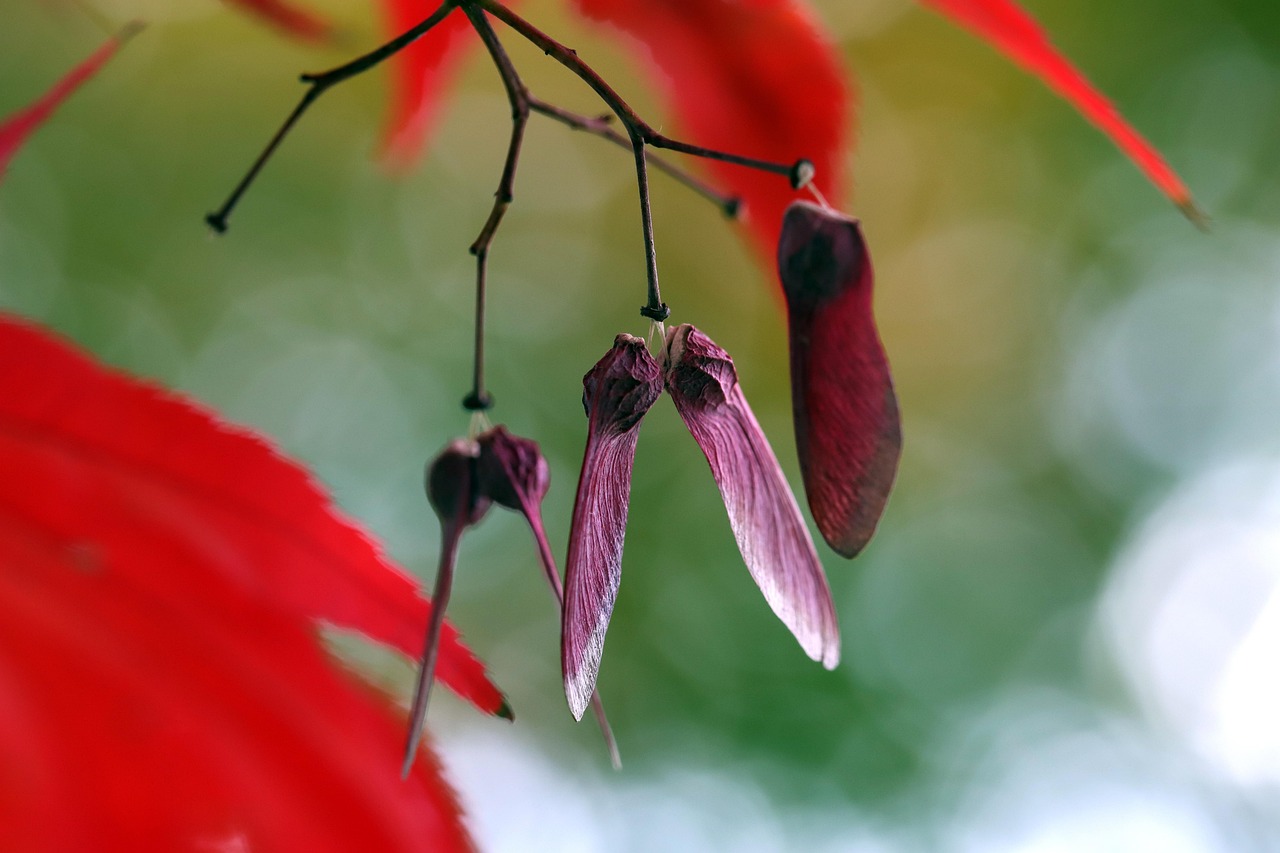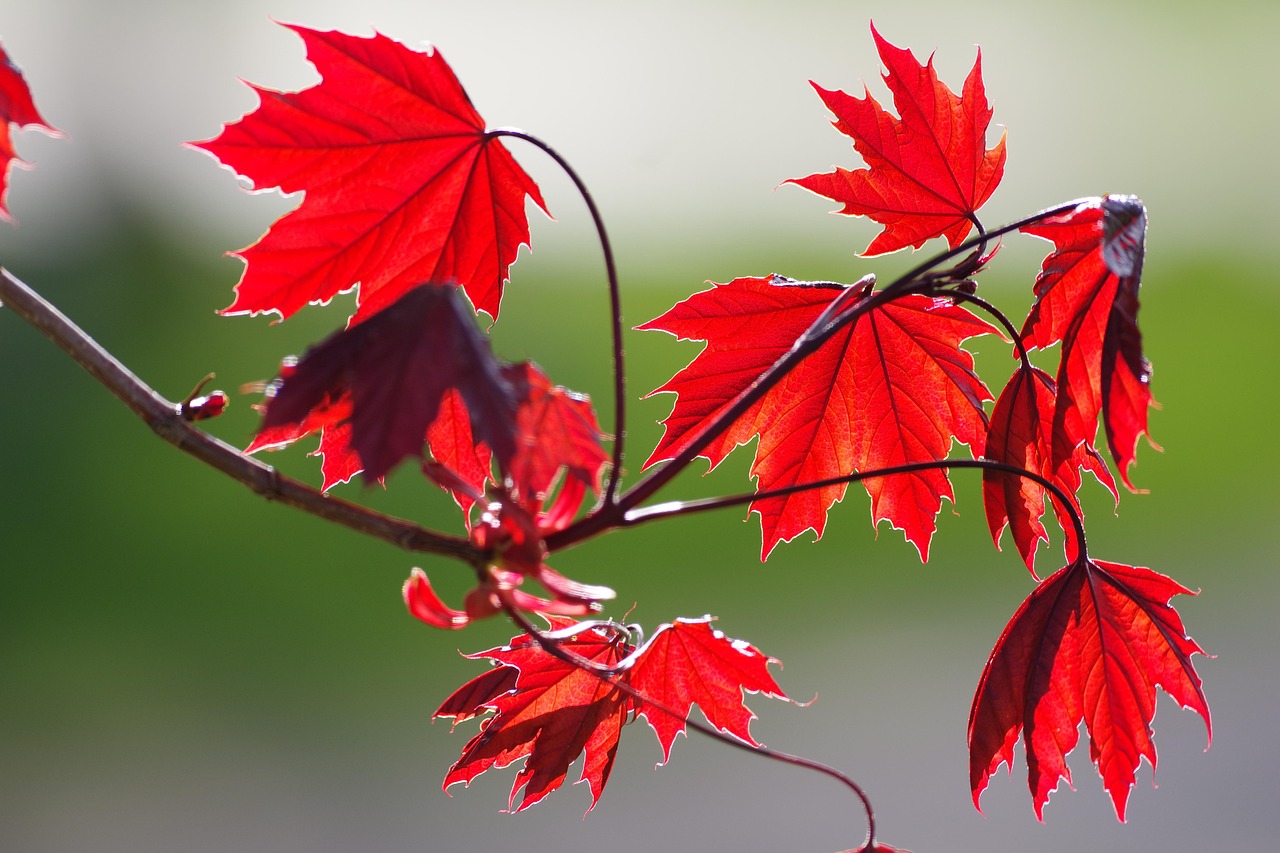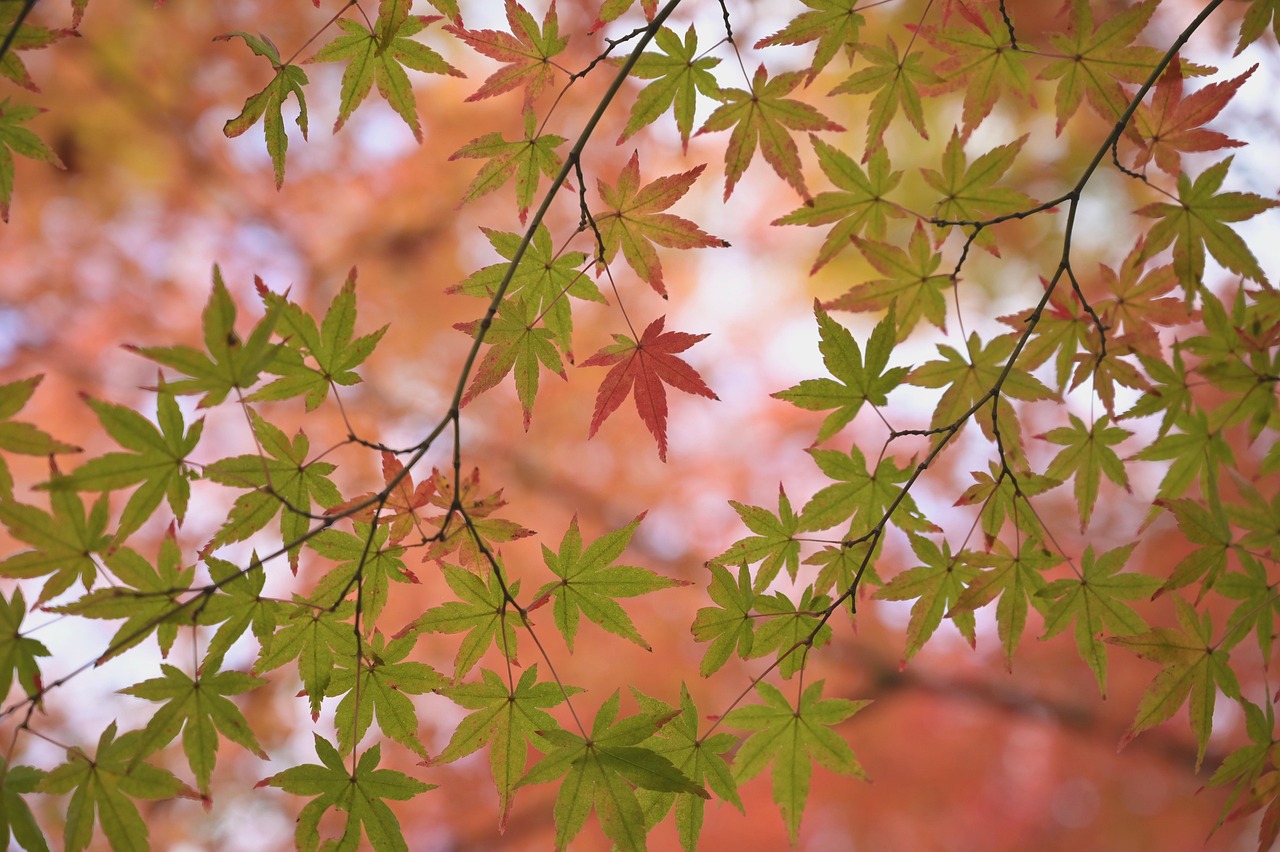Red maple trees are not red all year. Their vibrant red color is most prominent in the fall. During spring and summer, their leaves are typically green, changing to brilliant hues of red, orange, and yellow as autumn approaches.
Understanding Red Maple Trees

Red maple trees, scientifically known as Acer rubrum, are one of the most popular and widely distributed trees in North America. Known for their rapid growth and adaptability, these trees thrive in a variety of soil conditions. They can be found in both wetland and upland areas, making them exceptionally versatile.
The red maple gets its name from the bright red color of its flowers and leaf stalks. This color is particularly striking in the fall when the leaves turn a stunning array of reds and oranges. However, it is important to understand that this vibrant display is seasonal and does not occur year-round.
Seasonal Changes in Leaf Color
The color changes of red maple trees are primarily influenced by seasonal shifts in temperature and light. Each season brings different conditions that affect how and when these trees display their colors.
Spring
In spring, red maple trees begin to bud, producing small, bright red flowers before the leaves fully develop. The leaves emerge as a soft green, providing essential photosynthesis for the tree as it grows. This green coloration is due to chlorophyll, which plays a critical role in converting sunlight into energy.
Summer
As summer progresses, the leaves remain predominantly green. The chlorophyll levels peak during this time, supporting the tree’s growth and development. The lush green foliage provides shade and habitat for various wildlife. While green may not be as visually striking as the fall colors, it plays a vital role in the tree’s health.
Fall
As autumn approaches, cooler temperatures and shorter daylight hours trigger a change in the tree’s physiology. The chlorophyll begins to break down, revealing other pigments that were previously masked. This process leads to the vivid reds, oranges, and yellows characteristic of red maple trees.
The specific shades of red can vary based on several factors, including soil pH, moisture levels, and the tree’s genetics. Some trees may produce bright crimson leaves, while others exhibit softer hues of orange or yellow.
Winter
In winter, red maple trees are bare, with no leaves to display color. The stark branches may appear gray or brown against the winter landscape. However, even in this dormant state, these trees contribute to the ecosystem by providing shelter for various birds and other wildlife.
| Season | Leaf Color | Key Characteristics |
|---|---|---|
| Spring | Green with Red Flowers | New growth begins; flowers bloom |
| Summer | Green | Full leaf development; thriving photosynthesis |
| Fall | Red, Orange, Yellow | Vivid color display as chlorophyll breaks down |
| Winter | Brown/Gray (bare) | Dormant phase; no leaves present |
Understanding these seasonal changes helps appreciate the beauty of red maple trees throughout the year. Each phase has its own unique charm that contributes to the landscape. Whether it is the fresh green of spring or the fiery colors of fall, red maples offer an ever-changing view for those who appreciate nature.
In summary, while red maple trees are famous for their striking fall colors, they undergo significant transformations throughout the year. Each season presents its own set of characteristics that highlight different aspects of this remarkable tree. From budding flowers in spring to bare branches in winter, red maples have a story to tell every season.
Factors Influencing Leaf Color Change
The vibrant color changes in red maple trees during fall are influenced by a variety of factors. Understanding these elements can provide insight into the spectacular displays seen each autumn. Several key factors contribute to the intensity and timing of the color change in maple leaves.
Temperature
Temperature plays a crucial role in the color change of red maple leaves. Cooler temperatures, particularly at night, signal the tree to begin the process of shutting down photosynthesis. This process allows other pigments to become visible as chlorophyll breaks down. The following points summarize how temperature impacts leaf color:
- Warm Days: Bright sunlight and warm temperatures during the day promote photosynthesis, which helps maintain chlorophyll levels.
- Cool Nights: Nighttime temperatures that drop significantly encourage the breakdown of chlorophyll, leading to enhanced color displays.
- Early Frost: An early frost can accelerate the color change, often resulting in more vivid hues.
Sunlight Exposure
The amount of sunlight each leaf receives also affects its color change. Leaves that are more exposed to sunlight typically show brighter colors compared to those in shaded areas. Here are a few points regarding sunlight exposure:
- Direct Sunlight: Leaves basking in direct sunlight tend to produce more anthocyanin, a pigment that contributes to red and purple hues.
- Shaded Leaves: These may not produce as much anthocyanin, resulting in less vibrant colors, often leaning more towards yellow or orange.
- Leaf Position: Higher leaves on the tree usually experience more sunlight, thus showing more intense colors than those lower down.
Soil Quality and Moisture
The quality of the soil and the moisture available to red maple trees also play a significant role in their overall health and, consequently, their leaf color. Healthy trees are more capable of producing vibrant autumn colors. Key considerations include:
- Soil pH: Red maples prefer slightly acidic soils. Soil pH affects nutrient availability, which can impact leaf coloration.
- Moisture Levels: Adequate moisture during the growing season supports healthy growth and can enhance color intensity in fall.
- Nutrient Availability: Nutrients like nitrogen and phosphorus contribute to healthy leaves and promote vivid colors.
The Role of Pigments in Leaf Color
The stunning fall colors of red maple trees are due to various pigments present in their leaves. Each pigment contributes differently to the overall appearance of the foliage. Understanding these pigments can shed light on why red maples exhibit such a diverse palette of colors.
Chlorophyll
Chlorophyll is the green pigment responsible for photosynthesis. During spring and summer, its abundance masks other pigments. As chlorophyll breaks down in autumn, the true colors of other pigments become visible. Key points about chlorophyll include:
- Role in Photosynthesis: It captures sunlight, allowing the tree to convert light energy into chemical energy.
- Seasonal Breakdown: As temperatures drop, chlorophyll production decreases, leading to a shift in leaf color.
Carotenoids
Carotenoids are pigments that produce yellow and orange colors in leaves. They are present throughout the growing season but become more noticeable as chlorophyll fades. Important aspects include:
- Consistent Presence: Unlike chlorophyll, carotenoids remain in leaves until they fall.
- Environmental Influence: The intensity of yellow and orange shades can depend on the tree’s health and environmental conditions.
Anthocyanins
Anthocyanins are responsible for the red and purple hues seen in some leaves. They are produced in response to specific environmental triggers. Key points include:
- Synthesis Triggered by Stress: Conditions like bright sunlight and cool temperatures promote anthocyanin production.
- Protective Role: They may help protect leaves from sun damage and reduce water loss during dry conditions.
The Impact of Climate Change on Maple Trees
As climate change continues to affect weather patterns, its impact on red maple trees is becoming increasingly evident. Changes in temperature and precipitation can influence their growth cycles and seasonal color changes. Important considerations include:
- Warmer Temperatures: Rising average temperatures can lead to earlier leaf development and potentially alter the timing of color changes.
- Irrigation Needs: Changes in precipitation patterns may require adjustments in water management for optimal health.
- Disease Vulnerability: Altered climates can increase susceptibility to pests and diseases that threaten tree health.
The continued observation of these factors is essential for understanding how red maple trees will adapt and thrive amid changing environmental conditions. By studying these influences, we can gain insights into maintaining healthy populations of this iconic species for future generations.

Common Uses and Benefits of Red Maple Trees

Red maple trees are not only admired for their striking fall colors, but they also serve numerous practical purposes. They are valued in landscaping, forestry, and even as a source of food. Understanding the various uses and benefits of red maple trees can enhance appreciation for these beautiful specimens.
Landscaping and Aesthetic Appeal
Red maples are commonly used in landscaping due to their stunning appearance and adaptability. Their vibrant fall colors make them a popular choice for gardens, parks, and urban areas. The following points highlight their landscaping benefits:
- Shade Trees: With their broad canopy, red maple trees provide excellent shade during hot summer months, making them ideal for residential yards and public parks.
- Seasonal Interest: The dynamic color changes from green in spring and summer to vivid reds, oranges, and yellows in autumn create year-round visual interest.
- Wildlife Habitat: Red maples support various wildlife species, providing food and shelter for birds, insects, and mammals.
Environmental Benefits
Beyond their aesthetic appeal, red maple trees contribute significantly to the environment. Their presence can improve local ecosystems and help mitigate environmental issues:
- Air Quality Improvement: Trees like the red maple absorb carbon dioxide and release oxygen, improving air quality in urban and suburban areas.
- Soil Erosion Control: The extensive root system of red maples helps anchor soil in place, reducing erosion and promoting soil health.
- Water Management: Their canopy intercepts rainfall, reducing runoff and promoting groundwater recharge.
Cultural Significance
In addition to their environmental benefits, red maple trees hold cultural significance in various regions. They are often associated with specific traditions and symbolism:
- State Tree: The red maple is the state tree of several U.S. states, including New York and West Virginia, symbolizing beauty and resilience.
- Art and Literature: The stunning colors of red maples have inspired artists, poets, and writers throughout history, symbolizing change and transition.
- Cultural Festivals: Many communities celebrate autumn with festivals that highlight the beauty of fall foliage, featuring red maples prominently.
Red Maple’s Role in Ecosystems
The ecological role of red maple trees is vital for maintaining biodiversity. They serve as a keystone species in many forest habitats. Their presence supports intricate food webs and contributes to ecosystem stability.
Habitat for Wildlife
Red maples are an essential habitat for many species. They provide food sources through their flowers and seeds while offering shelter. Key wildlife interactions include:
- Bird Species: Many birds nest in red maples. The flowers attract pollinators such as bees, which are crucial for local ecosystems.
- Mammals: Animals like squirrels and deer feed on the buds and seeds. The tree’s bark also provides habitat for insects that form part of the food chain.
- Insects: Various insects thrive on red maples, helping with pollination and serving as a food source for larger predators.
Forest Composition
In forest ecosystems, red maples often co-exist with other tree species. This diversity contributes to overall forest health. Important aspects include:
- Diversity of Species: Red maples cohabitate with oaks, pines, and other hardwoods. This diversity can enhance resilience against pests and diseases.
- Nutrient Cycling: The leaves of red maples decompose and enrich the soil, contributing to a healthy nutrient cycle essential for forest growth.
- Ecosystem Engineers: By influencing soil composition and habitat structure, red maples play a role in shaping their environments.
Cultivation and Care of Red Maple Trees
If you are considering planting a red maple tree, understanding its cultivation needs is essential. Proper care will ensure the tree thrives in your landscape for years to come.
Optimal Growing Conditions
Red maple trees thrive in specific conditions that enhance their growth potential. When planting or caring for these trees, keep the following factors in mind:
- Soil Type: They prefer well-drained soils that are slightly acidic. Heavy clay or overly dry soils may hinder their growth.
- Sunlight Requirements: Red maples grow best in full sun to partial shade, with at least four to six hours of direct sunlight daily.
- Watering Needs: Regular watering is crucial during dry periods, especially when the tree is young and establishing its root system.
Pest and Disease Management
Like any other tree species, red maples can be susceptible to certain pests and diseases. Being proactive can help maintain tree health:
- Pests: Common pests include aphids, scale insects, and leafhoppers. Regular monitoring can help prevent infestations.
- Diseases: Fungal diseases such as anthracnose can affect foliage. Proper spacing between trees can improve airflow and reduce disease risk.
- Cultural Practices: Implementing good practices like mulching and proper pruning can support overall tree health.
Cultivating red maples successfully requires attention to their environmental needs and proactive management against potential threats. With proper care, these trees can flourish, providing beauty and benefits for many years.
Understanding the Ecological Importance of Red Maple Trees

Red maple trees are more than just a beautiful addition to landscapes; they play a significant role in their ecosystems. Their presence supports biodiversity and contributes to the overall health of forest environments. This section will explore the ecological importance of red maple trees in greater detail.
Carbon Sequestration
One of the most critical roles red maples play is in carbon sequestration. Trees absorb carbon dioxide from the atmosphere, helping to mitigate climate change. Key points to understand about this process include:
- Long-Term Storage: As red maples grow, they store carbon in their biomass. This long-term storage is essential for reducing greenhouse gases.
- Photosynthesis: During photosynthesis, red maples convert carbon dioxide into oxygen and glucose, supporting life on Earth.
- Community Impact: The presence of red maples in urban settings can significantly improve air quality for local communities.
Soil Health Enhancement
Red maple trees contribute to soil health in various ways. Their leaves fall and decompose, enriching the soil with organic matter. This process offers several benefits:
- Nutrient Recycling: Decomposed leaves provide essential nutrients that promote the growth of other plants, supporting a diverse ecosystem.
- Soil Structure Improvement: The root systems of red maples help aerate the soil, improving its structure and water retention capabilities.
- Microbial Activity Boost: The organic matter from fallen leaves fosters beneficial microbial activity, which is crucial for nutrient cycling.
Invasive Species Control
Red maples can also play a role in controlling invasive species. By providing a robust framework for forest ecosystems, they can help maintain biodiversity. Important considerations include:
- Competition: Healthy red maple populations can outcompete invasive species for resources like sunlight and nutrients.
- Habitat Support: Diverse habitats created by red maples can attract native wildlife, promoting a balanced ecosystem.
- Restoration Efforts: Red maples are often used in reforestation projects to restore balance in areas affected by invasive species.
Cultural and Historical Significance of Red Maple Trees
The cultural and historical significance of red maple trees cannot be overlooked. These trees have been part of human history for centuries and continue to hold meaning for many communities.
Traditional Uses
Red maple trees have been utilized by various cultures for different purposes. Some traditional uses include:
- Syrup Production: The sap of red maples can be harvested to produce maple syrup, a sweetener enjoyed by many.
- Crafts and Tools: Indigenous peoples historically used red maple wood for making tools, canoes, and other crafts due to its durability.
- Cultural Ceremonies: In some cultures, red maples are incorporated into rituals and ceremonies, symbolizing strength and endurance.
Symbolism
Red maple trees also carry symbolic meanings for various groups. Some common associations include:
- Strength and Resilience: The ability of red maples to thrive in diverse conditions symbolizes strength and adaptability.
- Beauty and Change: Their stunning fall colors represent change and the beauty inherent in seasonal transitions.
- Cultural Identity: For many communities, red maples serve as a symbol of local identity and pride.
Conclusion
Red maple trees are remarkable not only for their striking seasonal color changes but also for their ecological, cultural, and historical significance. While they are not red all year round, their vibrant fall display captivates observers and serves as a reminder of nature’s beauty.
The various factors influencing their color changes—from temperature to sunlight—demonstrate the complex interconnections within ecosystems. Additionally, the benefits they provide—such as improving air quality, enhancing soil health, and supporting wildlife—highlight their vital role in maintaining ecological balance.
Cultivating red maples with care ensures that future generations can enjoy their beauty and benefits. As we face the challenges posed by climate change and environmental degradation, understanding and preserving such species becomes increasingly important. Red maples represent a bridge between human culture and the natural world, reminding us of our responsibility to protect these invaluable resources for the future.
In summary, appreciating the seasonal color changes of red maple trees provides insight into their complex life cycles and ecological importance. By recognizing their contributions to our environment and culture, we can work towards fostering healthier ecosystems that benefit both nature and humanity.
